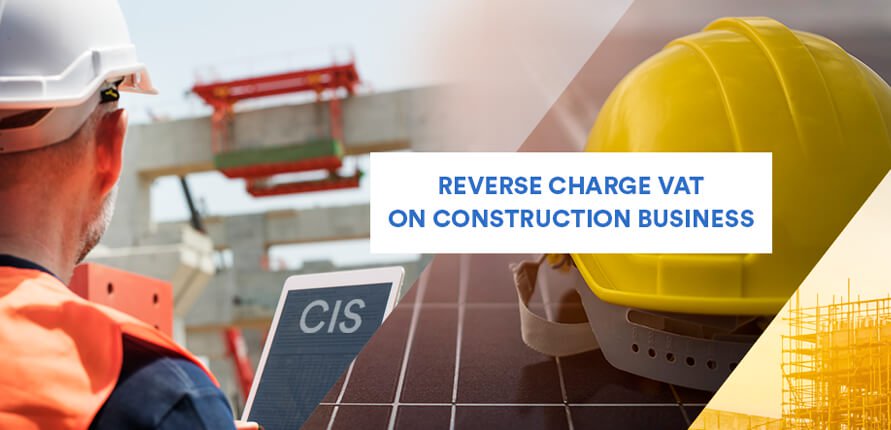
Almost a year from now i.e. from on 1 October 2020 onwards, the reverse charge mechanism for construction industry will seep into the UK taxation system. Ever wondered why it is coming into the picture? Why is it even required?
The Construction Industry Scheme (CIS) as we know was introduced to address the direct tax fraud. The government was looking for similar policy options to address VAT frauds. Thus, to combat the ever-rising VAT frauds in this industry VAT reverse charge is set to be introduced. Currently, suppliers in this industry do charge their customers Value Added Tax (VAT) but fail to pay it over to the HMRC. In a bid to the outcome, such situations government is now all set to roll out VAT reverse charge in the construction industry. Under this scheme, the customer receiving the specified service has to pay the VAT to HMRC instead of the supplier. Essentially, money paid as VAT for the construction services will no longer pass between businesses, it will be paid directly by the customer to the government. In turn, the customer can then take credit for the VAT so paid. Overall it has a neutral effect on the customer.
Conditions for applying of reverse charge
Reverse charge on construction services applies only if all the following conditions are satisfied:
- Supply is of services that also need to be reported under CIS.
- The said services are supplied at the standard or reduced rates.
- The customer and supplier are registered for UK VAT.
- The customer and supplier are registered for CIS.
- The customer is an intermediary and not the end-user. Also, the intermediary is not connected with end-users.
- The customer does not have a relevant interest inland. E.g. supplier and recipient do not share the relationship of landlord and tenant etc.
Preparatory steps
- Identify if the services provided get covered under reverse charge.
- Distinguish if the customer is an intermediary/sub-contractor or end-user. Remember, end-users, are businesses, or groups of businesses, that do not make onward supplies of the building and construction services and so are not covered under reverse charge.
- Check if the customer is registered under VAT.
- Update the accounting software to deal with reverse charge transactions.
- Train the staff regarding the applicability and operation of the reverse charge mechanism.
- There might be an impact on cash flows upon the onset of the reverse charge scheme. It would be important to analyse these changes.
How to identify if ongoing contracts fall under reverse charge or not?
For contracts ongoing on 1 st October 2020, it is important to determine whether they fall under the reverse charge mechanism or not. In order to ease the VAT accounting treatment in such cases, HMRC has suggested that a similar treatment should be given to all contracts with a particular sub-contractor. So, if the contractor looks across all construction contracts with a sub-contractor and can see that reverse charge applies to more than 5% of contracts (by volume or value) with that sub-contractor, then the reverse charge may be applied to all the contracts. This would help in averting uncertainty and delay to payments while each contract is checked for reverse charge applicability.
For contracts starting after 1 October 2020, the businesses need to decide whether the reverse charge applies from the beginning of the contract itself.
What is the contractor supposed to do?
The contractor needs to review all the contracts with sub-contractors, in order to find out if the reverse charge will apply to the services received under the contracts. If it applies then the contractor needs to notify suppliers about it.
If the contractor provides construction services to a sub-contractor, then the amount of VAT required to be paid by sub-contractor under reverse charge must be clearly stated on the VAT invoice issued by the contractor. This amount should not be included in the amount shown as total VAT charged. Rather, it can be shown as a reference on the invoice to make it clear that the reverse charge applies and that the sub-contractor is required to account for the VAT. E.g. Stating “reverse charge: VAT Act 1994 Section 55A applies” or “reverse charge: Customer to pay the VAT to HMRC” etc.
What is Sub-contractor supposed to do?
The sub-contractors should also confirm with their customers if they are intermediary suppliers or the end-user to ensure that reverse charge applies or not.
The sub-contractor should confirm to the contractor that he is not the end-user. Further, once he has received the service and invoice is raised in his favor, he must account for reverse charge VAT on the VAT return for the period in which he has received construction services. He can reclaim this VAT input tax on the same return as it is
accounted for.
Liberal approach of HMRC in the early stage
The HMRC shall adopt a lenient approach while dealing with any errors for the first 6 months from the onset of this legislation. No penalties shall be levied as long as assesse is trying to comply with the mechanism and is not intentionally taking undue advantage of leniency. During this period any errors that get detected need be corrected as soon as possible, as the longer under-declared or overcharged sums remain outstanding the more difficult it may be to correct or recover them.
Conclusion:
In order to avoid any sort of disruption once the reverse charge on construction services comes on the floor, it’s important to understand it and check its applicability to the concerned businesses. It is important to be well prepared ahead of time. If this legislation is applicable to a business concern, then they need to review each of their contracts in light of this legislation and be all set to abide by the requirements of the same. This will ensure an effective and smooth rollout of the new legislation.












